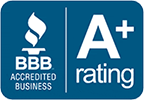When it comes to enhancing the curb appeal, thermal efficiency, and durability of your home, choosing the right siding material is paramount. The question is — between Vinyl, Wood, and Fiber, which is the best for your unique situation? Dive into this blog post where we unpack these three popular options in detail, comparing their pros and cons to make your decision-making process a little bit easier — whether you are building from scratch or intending to give your Austin home a well-deserved exterior refresh. Let's help you discover which siding material promises the perfect blend of aesthetics, performance, and value for your home!
Analyzing Vinyl Siding
Vinyl siding has gained immense popularity as a siding material for homes, thanks to its affordability, durability, and low maintenance requirements. When analyzing vinyl siding, there are several factors to consider to determine if it's the right choice for your home.
First and foremost, let's dive into the cost-effectiveness of vinyl siding. Compared to other siding materials such as wood or fiber cement, vinyl is often more affordable upfront. Its lower cost can make it an attractive option for homeowners on a budget or those looking to keep their exterior renovation expenses in check. Additionally, vinyl siding's long lifespan reduces replacement costs over time.
For instance, imagine you have a moderate-sized home that requires new siding. The cost of wood or fiber cement siding may be significantly higher than vinyl, making vinyl siding an appealing option if you want to save some money.
Another important aspect when analyzing vinyl siding is its durability. Vinyl siding is highly resistant to moisture and pests like termites or carpenter ants, which can cause extensive damage to other types of siding materials. It is also non-porous, meaning it doesn't absorb water and is less likely to rot or warp. Furthermore, modern advancements in manufacturing techniques have led to enhanced impact resistance, reducing the chances of denting or cracking due to hail or other impacts.
However, it's worth noting that extreme temperature fluctuations can affect the longevity of vinyl siding. In areas with intense heat or cold, the expansion and contraction of the material over time may lead to warping or buckling. Therefore, understanding your local climate and its potential impact on vinyl siding is essential before making a decision.
Advantages and Drawbacks of Vinyl
Vinyl siding comes with various advantages that make it an attractive option for many homeowners. One of its main advantages is low maintenance. Vinyl siding requires minimal upkeep compared to other materials, as it does not need frequent painting or staining. It can be easily cleaned with a garden hose and mild detergent, saving homeowners both time and money on maintenance tasks.
Another advantage of vinyl siding is its wide range of design options. It's available in numerous colors, textures, and styles, allowing homeowners to choose a look that suits their personal taste and the architectural style of their home. Whether you prefer a traditional, rustic, or modern aesthetic, there's likely a vinyl siding option that can meet your design preferences.
Choosing the right vinyl siding for your home is like shopping for a new wardrobe - you can express your unique style by selecting different colors and textures that reflect your personality.
In addition to these benefits, it's important to consider some drawbacks associated with vinyl siding. One notable drawback is its lack of insulation. Vinyl alone does not provide significant insulation properties, which means additional insulation may be necessary to enhance energy efficiency in your home. This can add to the overall project cost.
Furthermore, while durable against many elements, vinyl siding may be susceptible to damage from extreme weather conditions such as strong winds or hailstorms. In these situations, the impact resistance of vinyl siding may not match that of other materials like fiber cement or metal.
However, it's essential to weigh these drawbacks against the advantages and keep in mind that proper installation by experienced professionals can mitigate potential issues and maximize the benefits of vinyl siding.
Now that we've thoroughly examined the advantages and drawbacks of vinyl siding, let's move on to understanding wood siding and whether it might be the best fit for your home.
Understanding Wood Siding
Wood siding has been a popular choice for homes for centuries, thanks to its timeless beauty and natural appeal. It adds warmth and charm to any house, giving it a classic and rustic look. But what exactly is wood siding and how does it work?
Wood siding is made from different types of wood, such as cedar, pine, or spruce. Each type has its own unique characteristics and advantages. The boards are typically installed horizontally, with each piece overlapping the one below it, creating a layered effect. This installation method helps protect the underlying structure from moisture and provides insulation.
Wood siding comes in various styles, including clapboard (also known as bevel), shiplap, and board-and-batten. Clapboard is the most common style and consists of long, narrow boards that overlap horizontally. Shiplap has a similar design but utilizes tongue-and-groove joints for a tighter fit. Board-and-batten features wide vertical boards with narrower strips covering the gaps between them.
Consider a traditional farmhouse with white clapboard wood siding. The crisp lines and textured surface evoke a sense of nostalgia while blending harmoniously with the surrounding landscape. It's an embodiment of rustic charm that stands the test of time.
Wood siding offers excellent durability when properly maintained. It can withstand harsh weather conditions, including wind, rain, and sunlight. However, regular maintenance is crucial to ensure its longevity. This includes periodic painting or staining to protect against rotting or warping due to moisture exposure.
Wood siding also provides good insulation properties, helping to regulate heat transfer between the interior and exterior of a home. It acts as a natural insulator due to the air pockets present within each wooden board.
However, wood siding does have its drawbacks. One major concern is its susceptibility to pests such as termites or carpenter ants. These insects can cause significant damage to the siding and the structure behind it if not addressed promptly. Regular inspections and preventive measures, such as treating the wood with insecticides, are essential to safeguard against infestations.
Another potential issue with wood siding is its vulnerability to moisture. If left unchecked, moisture infiltration can lead to rotting, decay, and mold growth. Proper sealing and regular maintenance are vital to prevent water damage and ensure the longevity of the siding.
Now that we have a solid understanding of wood siding, let's discuss its benefits as well as some of the pitfalls to consider when choosing this material for your home.
Benefits and Pitfalls of Wood
Wood siding offers numerous benefits that make it an attractive choice for homeowners. Firstly, its natural beauty and timeless appeal create a warm and inviting aesthetic for any home. The grain patterns, colors, and textures of different types of wood add character and charm.
Additionally, wood has excellent insulating properties that can help regulate temperature and reduce energy consumption. It acts as a natural barrier against heat transfer, keeping the interior comfortable in both summer and winter.
Moreover, wood siding is versatile in terms of design options. It can be easily cut into different shapes or profiles to cater to various architectural styles. This adaptability allows homeowners to customize their exteriors according to their preferences or match the historical context of their homes.
However, along with these advantages come a few considerations that homeowners should carefully weigh when contemplating wood siding. As mentioned earlier, wood requires regular maintenance to protect it from moisture damage and insect infestations. This upkeep includes painting or staining every few years, which adds both time and cost commitments.
Imagine you've fallen in love with a charming cottage-style house that features beautiful redwood siding. While it fits perfectly within your ideal image of a home, it's essential to recognize that maintaining its luster would entail dedicated efforts in preserving the wood against the elements.
Additionally, the upfront cost of wood siding can be higher compared to other materials like vinyl or fiber cement. However, it's important to note that wood siding can significantly enhance the overall value and curb appeal of a home, potentially resulting in higher resale prices down the line.
Despite these considerations, many homeowners find the allure and unique qualities of wood siding well worth the investment. Its natural beauty, ability to age gracefully, and environmentally friendly properties make it a sought-after choice for those seeking an authentic and timeless look for their homes.
Unpacking Fiber Siding
Fiber siding is an increasingly popular choice for homeowners seeking a durable and low-maintenance exterior for their homes. Also known as fiber cement siding, it is composed of a mix of cement, sand, and cellulose fibers. This combination creates a material that offers the appearance of wood siding while providing enhanced durability and resistance to various elements.
When unpacking fiber siding, it's important to understand its composition and manufacturing process. The cement component provides strength and stability, ensuring the siding can withstand harsh weather conditions such as high winds, heavy rain, or extreme temperatures. The sand reinforces the structure and adds texture to mimic the look of natural wood grains. The cellulose fibers enhance flexibility, making the siding resistant to cracking and warping.
One of the distinct advantages of fiber siding is its versatility in terms of design options. Manufacturers often offer a wide range of colors, styles, and textures that can closely resemble various wood species. This allows homeowners to achieve the desired aesthetic appeal without the drawbacks associated with natural wood materials.
Furthermore, fiber cement siding boasts exceptional resistance against pests, including termites and other wood-destroying insects. Unlike traditional wooden sidings that are susceptible to infestations and rot over time, fiber siding remains durable and free from such issues.
Picture this: You're a homeowner who desires the classic charm of wooden siding but doesn't want to deal with ongoing maintenance or potential termite troubles. Fiber siding becomes an attractive option that combines aesthetics with practicality.
Additionally, fiber siding provides excellent fire resistance properties. Its non-combustible nature gives homeowners peace of mind in areas prone to wildfires or when living near properties with limited spacing between houses.
With fiber siding's composition and benefits unravelled, let's now explore its pros and cons in more detail.
Pros and Cons of Fiber
Fiber siding comes with several notable advantages, but it also has its limitations that homeowners should consider before making a decision. Let's delve into the pros and cons of fiber siding:
Pros of Fiber Siding
- Durability: Fiber cement siding is highly resistant to impact, weather damage, and UV rays. It can withstand the test of time, extending the lifespan of your home's exterior.
- Low Maintenance: Unlike wood siding, fiber cement requires minimal maintenance. It does not need regular painting or staining and can be cleaned with simple tools like soapy water and a brush.
- Versatility: With a wide range of design options available, fiber siding can emulate the look of various wood species or even other materials like stone or brick.
- Fire Resistance: Thanks to its non-combustible properties, fiber cement siding offers superior fire resistance compared to wood siding.
Cons of Fiber Siding
- Installation Difficulty: Due to its weight and composition, fiber cement siding installation can be more labor-intensive than other types of sidings. Hiring professional contractors familiar with fiber siding installation is recommended.
- Higher Cost: Fiber siding tends to have a higher upfront cost compared to vinyl or wood sidings. However, considering its durability and low maintenance requirements, it may provide long-term cost savings.
To illustrate this point: Let's say you compare the initial cost of fiber siding with that of wood siding. While the former might seem pricier at first glance, when factoring in future expenses for painting, staining, and potential repairs associated with wood siding, fiber siding could potentially save you money in the long run.
- Limited DIY Options: The weight and composition of fiber cement make it challenging for DIY enthusiasts to handle the installation themselves. Professional expertise is generally required to ensure proper installation and maintain warranty coverage.
- Moisture Absorption: Although highly resistant to moisture, fiber siding can absorb some water if not properly installed or maintained. This may lead to issues such as mold growth or premature deterioration.
Now that we've explored the pros and cons of fiber siding, let's proceed with a comparison of vinyl, wood, and fiber sidings to assist homeowners in making an informed decision.
Tabulating the Comparison: Vinyl vs. Wood vs. Fiber
When it comes to choosing the best siding material for your home, it's important to consider various factors such as durability, aesthetic appeal, maintenance requirements, and cost. Let's delve into a detailed comparison of three popular siding materials - vinyl, wood, and fiber cement - to help you make an informed decision.
Durability: Vinyl siding is known for its exceptional durability. It is resistant to rot, warping, and insect damage, making it a low-maintenance option that can withstand harsh weather conditions. However, extreme temperature changes can cause vinyl siding to expand or contract over time. On the other hand, wood siding provides a timeless look and has decent durability if properly maintained with regular painting or staining. Wood may be susceptible to moisture-related issues if not adequately protected. Fiber cement siding offers excellent durability, being highly resistant to rot, fire, and pests. It can even mimic the appearance of wood with less maintenance required.
Aesthetic Appeal: When it comes to aesthetics, all three siding options have their own unique charm. Vinyl siding comes in a variety of colors and textures that can enhance the curb appeal of your home while requiring little maintenance beyond occasional cleaning. Wood siding exudes natural beauty with its rich grain patterns and can be customized with different finishes or painted in any color to match your style preferences. Fiber cement siding is versatile and can replicate the look of wood without the drawbacks associated with it.
Imagine you want a classic exterior for your colonial-style home; wood siding could give you that timeless appeal with its warm tones and traditional feel.
Maintenance Requirements: One advantage of vinyl siding is its low maintenance requirements. Once installed, it typically only requires occasional cleaning with soap and water to keep it looking fresh. Wood siding demands more care as it needs periodic repainting or staining to protect against moisture damage and maintain its appearance. Fiber cement siding is relatively low-maintenance, requiring occasional cleaning and repainting every 10-15 years.
It's important to consider the long-term costs associated with each siding material as well.
Cost: Vinyl siding tends to be the most cost-effective option among the three. Its affordability makes it a popular choice for homeowners on a budget. Wood siding can be more expensive upfront due to material costs and ongoing maintenance requirements. Fiber cement siding falls in between, offering a balance of cost and durability.
Environmental Impact: When evaluating the environmental impact, vinyl siding may not be the most eco-friendly option due to its production process and the fact that it cannot be easily recycled. Wood siding sourced from sustainable forests can be a more environmentally conscious choice. Fiber cement siding is made from a combination of natural materials, including wood fibers, sand, and cement, making it a greener alternative.
Choosing the right siding material for your home is like selecting the perfect outfit for an important occasion - you want something that looks good, lasts long, and fits within your budget while aligning with your values.
Ultimately, the best siding material for your home depends on your specific needs and preferences. Vinyl siding offers durability at an affordable price point, wood provides timeless beauty but demands more maintenance, while fiber cement combines durability and versatility. Consider consulting with a professional exterior remodeling company like JP Exteriors to discuss your options further and ensure you make the right choice for your home.
Subscribe to JP Exteriors's Blog








Comments